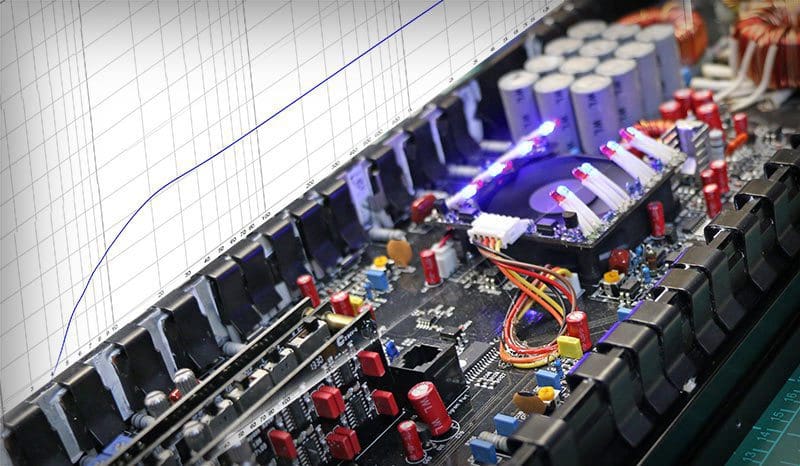 As the next topic in our series explaining amplifier specifications, we will look at the frequency response information that manufacturers provide and explain how to interpret this information. In the simplest of statements, the frequency response spec will tell you about the low- and high-frequency limits of the amplifier based on its design. As with all the specs we have looked at, the information provided is as telling as the information that may be missing from the spec page. Let’s dive in and have a look.
As the next topic in our series explaining amplifier specifications, we will look at the frequency response information that manufacturers provide and explain how to interpret this information. In the simplest of statements, the frequency response spec will tell you about the low- and high-frequency limits of the amplifier based on its design. As with all the specs we have looked at, the information provided is as telling as the information that may be missing from the spec page. Let’s dive in and have a look.
Understanding Amplifier Frequency Response Specifications
Let’s take a look at a good amplifier with a specification of 4 Hz to 50 kHz. In this particular example, there is no tolerance provided, so we don’t know if those low- and high-frequency limits represent a 1dB or 3dB tolerance. Let’s fire up the amp and see what we can find out.
Connected to our digital interface and bank of load resistors, the amp shows a -1 dB frequency response of 8.21 Hz on the bottom end and 48.7 kHz on the top. Allowing for a tolerance of 3 dB, the measurement is 4.36 Hz on the bottom and above the 96 kHz measurement limit of my equipment on the top.
In short, this information tells us that this amp won’t dramatically affect the response of your audio system anywhere in the audible spectrum, and well beyond.
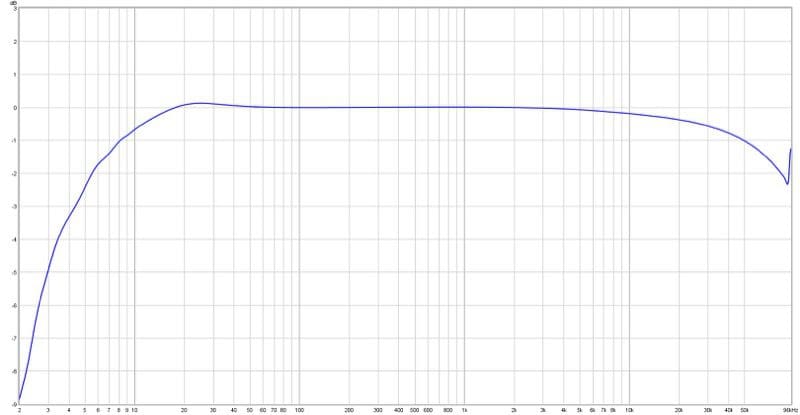
Speakers Are Not Resistors
Several factors govern the frequency response of an amplifier. Outside of a discussion of the circuit design and components used for the amp, what most people realize is that the speaker system you connect your amp to can affect its performance. In the lab, we use resistive loads. In the real world, speakers add a level of inductive reactance that opposes AC current flow and affects frequency response. When you add a passive crossover network, the load now includes capacitive reactance. Ultimately, even in a simple two-way passive crossover network, the load the amp sees varies a great deal depending on frequency.
I contacted John Atkinson, editor at Stereophile magazine, and asked permission to recreate his reactive speaker simulation network. His use of a reactive load for amplifier response testing was the result of an Audio Engineering Society paper by Eric Benjamin titled, “Audio Power Amplifiers for Loudspeaker Loads.” Atkinson consulted with Ken Kantor of NHT and International Jensen on the passive network, and the result was a version of the network you see below.
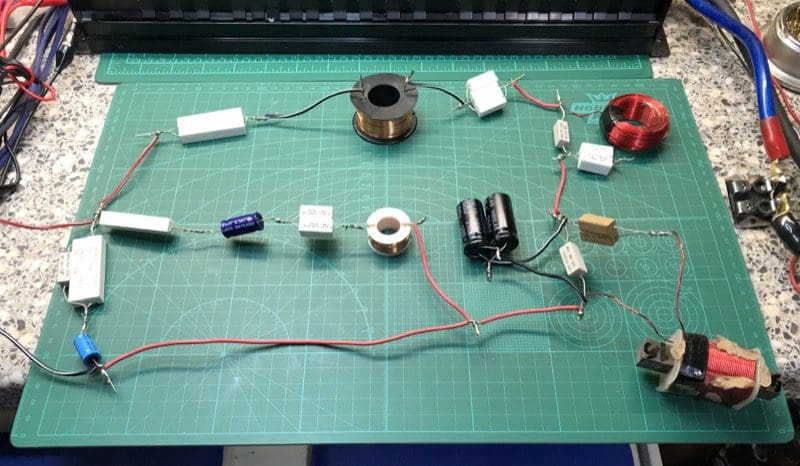
The purpose of this network is to present different impedances to the amplifier at different frequencies to evaluate its performance. The network replicates what an amplifier would see when powering a two-way, sealed-enclosure bookshelf speaker with a nominal impedance of 8 ohms. I created this network with the help of Frank Fabian at The Speaker Shop in Toronto. His store has an impressive supply of capacitors, resistors and inductors in stock. If you have a home speaker that needs repair or reconing, he’s the man to talk to!
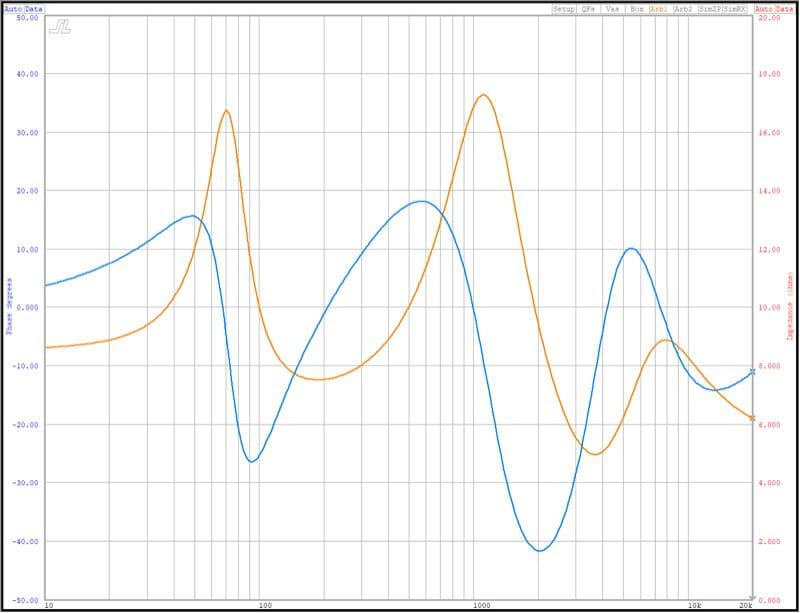
Amplifier Response into Reactive Loads
The next step was to repeat the frequency response measurement of our reference amp using a 4-ohm load, a 2-ohm load and our reactive load to demonstrate just how much effect there is on the response.
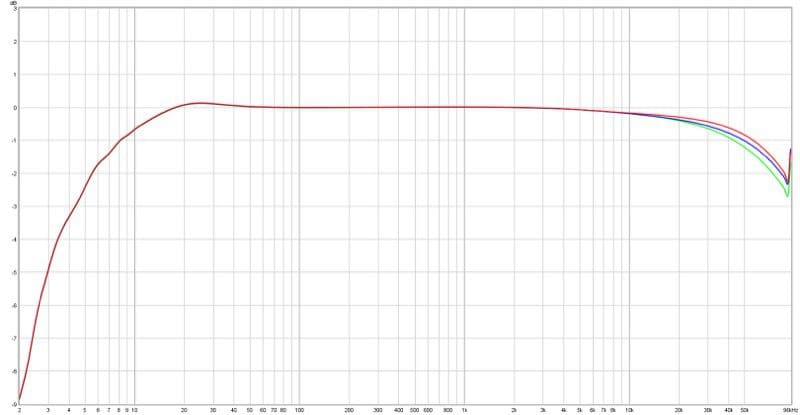
As you can see, there is a small change in high-frequency response from this amp depending on the impedance of the load. The amp includes some filter chokes on the outputs as part of its variable voltage power supply design. The difference between the 4-ohm and the reactive trace is 0.85 dB at 20 kHz.
What About Inexpensive Amplifiers?
Our reference amp is just that – a high-quality amp that sounds amazing. So, what happens when you perform these same tests on an inexpensive amp? Let’s look and see!
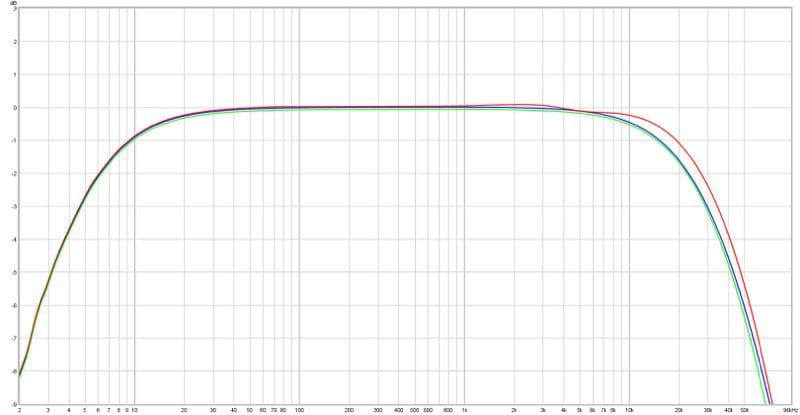
Our cheap amp does a fair job with the resistive loads, rolling off by 1dB around 16kHz on the top and below 10 Hz on the bottom. The red trace shows that there is some emphasis between 2 and 3 kHz caused by the inductive characteristics of the passive filter network. Would that emphasis be audible? That would depend on your level of obsession. You can hear the difference of a few tenths of a dB when adjusting an EQ.
How About Our Class-D Amplifier Friends?
As we mentioned, the small filters on the output of our good amp resulted in a measurable change in frequency response between the varying loads. What happens when we measure a Class-D amplifier that uses large filters on the outputs?
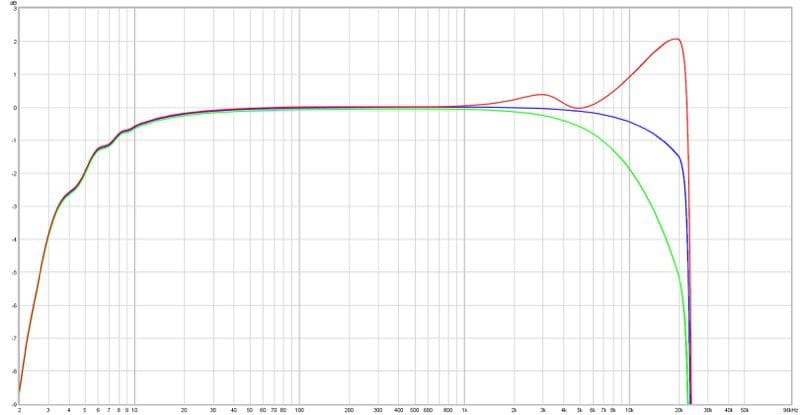
Here we can see that there is a half-dB bump around 3 kHz and more than 2 dB of additional output at 20 kHz as compared to the 1 kHz reference level. Compared to a purely resistive load, the bump at 20 kHz is 3.5 dB more than a 4-ohm resistive load and about 7 dB louder than 2 ohms. If you’ve ever wondered why Class-D amplifiers sound different than a high-quality Class-AB, this is one of the reasons.
Working with Frequency Response Specifications
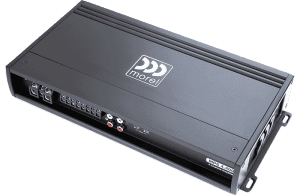 For most applications, you can ignore the frequency response measurements of the amplifiers you choose. The majority will be adequately flat from 20 Hz to 20 kHz. If you plan on driving a low-impedance load (low-impedance drivers or many drivers wired in parallel), the added impedance will dramatically reduce the high-frequency performance of a Class-D amp.
For most applications, you can ignore the frequency response measurements of the amplifiers you choose. The majority will be adequately flat from 20 Hz to 20 kHz. If you plan on driving a low-impedance load (low-impedance drivers or many drivers wired in parallel), the added impedance will dramatically reduce the high-frequency performance of a Class-D amp.
If you are planning on building an audio system that is truly high-resolution audio-ready, and capable of playing audio signals beyond 20 kHz, you are going to need to do some homework. Odds are, you’ll want a Class-AB amp for the tweeters, at the very least.
Finally, designing an audio system that uses active filtering will help reduce the variations in impedance caused by passive crossovers.
If you need help choosing an amplifier for your car audio system, drop into your local specialist mobile electronics retailer and talk to one of their product specialists.
Please check out other articles in our series on Understanding Specifications.
This article is written and produced by the team at www.BestCarAudio.com. Reproduction or use of any kind is prohibited without the express written permission of 1sixty8 media.